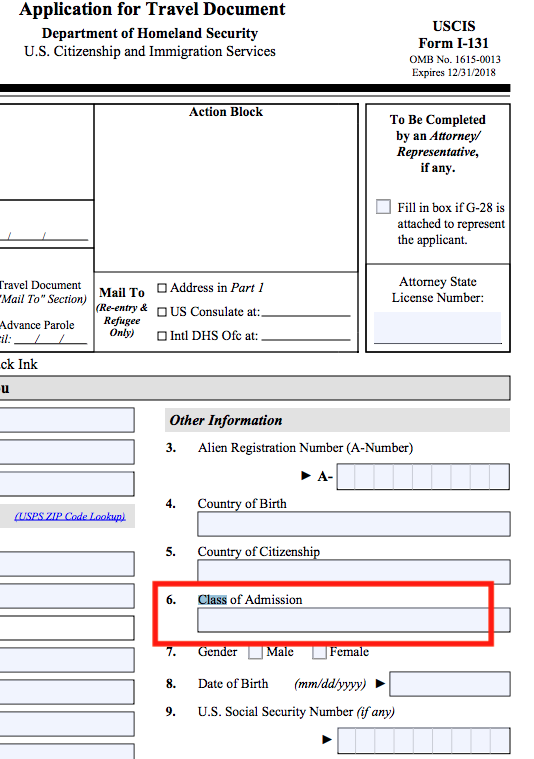Class Of Admission In Form I-131 – Admission forms are an essential part of the application process for universities or colleges. These forms are designed to gather details about the applicant and they also assist the institution in making informed decisions regarding who to admit. A well-written application could be the difference between securing the spot you want at the school of your dreams. This guide will outline all the important components of an application form. It will also offer the tips to write a great application and the most common mistakes to be avoided.
Key Components of a Admission Form
When you are filling out admission forms, there are certain elements which are commonly included. Here are a few of the most important elements to include in your admission form:
1. Personal Information
This section contains information such as your name email address, telephone number, and any other information about your contact.
2. Education Background
This section must contain details about your education experience, including the names of the schools you attended, the dates you attended and your major.
3. Work Experience
If you have any relevant work experience, be sure to include the details in the section below. List previous employers, titles of jobs, and dates.
4. Extracurricular Activities
This section is an opportunity to showcase your interests and talents outside of the classroom. You can list any clubs, organizations such as sports clubs, or activities you’ve participated in.
5. Essays/Personal statements
The majority of admission forms have an area that requires personal or essay essays. This is your opportunity to demonstrate why you would be a great fit for the institution.
Tips for Writing an Effective Admissions Application
- Make sure to keep it simple and succinct. Avoid complicated sentences using simple and concise language.
- Active voice: Use the active rather than passive voice when writing to make it more engaging.
- Show, not Tell Make use of anecdotes and specific examples rather than listing your accomplishments. This will allow your readers to get to know you, and what you can offer.
- It’s important to proofread and edit your work. Take the time to read your admissions form carefully in search of mistakes in grammar or typos.
- Make sure you tailor the application to the institution you are applying to: Make sure to follow the directions carefully and tailor your admissions application to the particular institution you’re applying to. Make sure you’ve researched the institution and what they are looking for.
Avoid these common Errors
- Complete information: Make certain that all the required parts of the application form are filled out and that the information provided is accurate.
- Spelling and grammar errors: These mistakes can make you appear unprofessional and diminish the overall impression of your application form.
- Failure to follow the instructions: Don’t forget to follow the formatting requirements or submission guidelines.
- You should not make up stories on your application. Falsely or exaggerating your achievements can hurt your chances of being admitted.
Conclusion
It is crucial to remember that a well-written college application or university application form is an integral element of the application. You can increase your chances to be accepted by including important elements, writing effectively, avoiding common errors, and tailoring the application form to the school. Be sure to proofread and edit the admissions form with care, and be truthful and exact in the data you fill in. Good luck!


